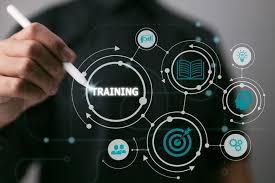Will AI revolutionize education for the better?
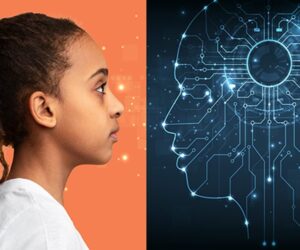
Another thrilling debate with both the propositions Sheila and Teagan and oppositions Deagan and Jessalyn putting forth strong arguments. The debate reflected both enthusiasm and trepidation around the incorporation of artificial intelligence (AI) in education. As AI becomes more ingrained in classrooms, the debate presents fundamental questions regarding the role of teachers, the integrity of learning and the trajectory of future curricula. The opposing sides presented passionate and divergent positions, each stressing the transformative possibilities of AI along with its potential risks.
Sheila and Teagan pointed out that AI was not something to be feared but instead should be seen as a driver for educational innovation. They argued for a change in assessment methods, suggesting that educators should adopt approaches in which AI usage would be reduced or made irrelevant. Their argument is supported by research in the peer-reviewed article “Lessons learned for AI education with elementary students and teachers“, which makes the case for AI literacy among young students. The article presents AI as the next technological advancement and the necessity for citizens to be knowledgeable about AI, both conceptually and ethically. Notably, it points out educator readiness as a critical factor, since teachers’ confidence in AI use significantly influences its adoption in teaching.
Although the call for new testing practices that work around AI might sound like a progressive solution, it threatens to overlook the larger educational opportunity AI affords. Avoidance can create short-term control, but constructive learning of AI in the long-term demands’ integration, thus it’s better to teach AI literacy.
On the contrary Deagan and Jessalyn cautioned that AI has the potential to cause more harm than benefit in education. They contend that overdependence on AI hinders critical thinking, encourages intellectual shortcuts, and compromises the integrity of student work. Among their strongest arguments was that “fast is not always efficient”, a rebuke of the tendency to value AI’s speed over the longer cognitive processes required for substantive learning. This concern is mirrored in the argument posed by Thompson (2025), who contends that AI has created “intellectual roadblocks,” degraded the teacher-student dynamic, and presented a host of ethical and educational issues. Thompson emphasizes that AI is frequently not being utilized constructively and that its presence in the classroom threatens to stifle development rather than promote it.
While the proposition focused on flexibility and the educational potential of AI, the opposition cautioned and called for a recommitment to traditional cognitive growth. There is one point both sides agree on, though: AI in education is unavoidable, it is the “how” that is up for debate. Certainly, AI integration in education is profound and increasingly difficult to disregard. It can provide personalized learning pathways, automate routine administrative tasks, and provide real-time feedback to students and teachers. Such efficiencies enable educators to devote more time to student engagement and creativity. For students with learning differences, AI can provide tailored assistance, such as text-to-speech tools or adaptive testing, making education more accessible.
Conversely, the downsides are no less urgent. Among the most troubling, according to both oppositions and Thompson (2025), the degradation of critical thinking and deep learning. When students use AI to do assignments or provide answers, they can circumvent the mental effort needed to actually learn and implement knowledge. There are also ethical and privacy issues, such as algorithmic bias, data exploitation and lack of transparency regarding how AI systems function. In addition, the digital divide may further expand, with under-resourced schools and students left behind in the AI revolution. While AI planning, clear policy, and a robust ethical framework are necessary to ensure it improves rather than detracts from the learning process.
Finally, AI’s impact on education is not inherently good or bad, but its effects will rest in purposeful implementation. Teachers will not only need to teach with AI but also about AI, raising ethical, knowledgeable users of technology. As researchers, policy makers, and classroom educators of the future, we need to see that AI is not a substitute for human teaching but a tool that. If used judiciously, it may enhance and augment it.
Finally, the debate made it clear that AI’s impact on education is not inherently good or bad, but that its effect will rest in purposeful implementation. Teachers will not only need to teach “with” AI but also “about” AI—raising ethical, knowledgeable users of the technology. As researchers, policymakers, and classroom educators of the future, graduate students need to see that AI is not a substitute for human teaching but a tool that, if used judiciously, may enhance and augment it. The revolution AI threatens is genuine, but its path rests in how boldly and responsibly we lead its integration.

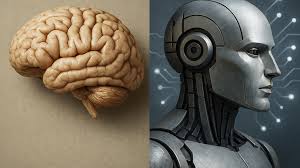
 The conversation is often framed as a binary choice: either we uphold outdated practices or fully embrace a digital-first approach. However, this dichotomy oversimplifies the issue. Foundational skills are not merely relics of the past; they are essential building blocks for cognitive development and digital fluency. I contend that foundational skills in math and literacy form the necessary scaffolding for advanced competencies, such as coding, digital problem-solving, and critical media literacy. My observation is that students who excel in math and reading tend to perform exceptionally well in coding and navigating technology.
The conversation is often framed as a binary choice: either we uphold outdated practices or fully embrace a digital-first approach. However, this dichotomy oversimplifies the issue. Foundational skills are not merely relics of the past; they are essential building blocks for cognitive development and digital fluency. I contend that foundational skills in math and literacy form the necessary scaffolding for advanced competencies, such as coding, digital problem-solving, and critical media literacy. My observation is that students who excel in math and reading tend to perform exceptionally well in coding and navigating technology.

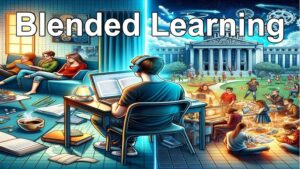
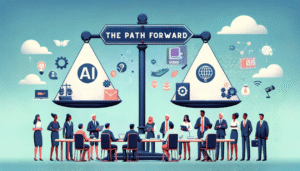

 It can provide personalized learning pathways, automate routine administrative tasks, and provide real-time feedback to students and teachers. Such efficiencies enable educators to devote more time to student engagement and creativity. For students with learning differences, AI can provide tailored assistance, such as text-to-speech tools or adaptive testing, making education more accessible.
It can provide personalized learning pathways, automate routine administrative tasks, and provide real-time feedback to students and teachers. Such efficiencies enable educators to devote more time to student engagement and creativity. For students with learning differences, AI can provide tailored assistance, such as text-to-speech tools or adaptive testing, making education more accessible. 